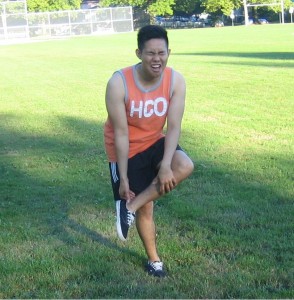As a common exercise problem, shin splints basically refer to the pain on the interior edge of the shinbone or tibia. Shin splints usually develop after a physical activity and often linked with running. Any rigorous sports activity can also cause shin splints, particularly if the individual starts a fitness program.
There are simple steps that can help minimize the pain related to shin splints such as application of ice, rest and stretching. Always remember not to overdo a particular exercise routine since it will help prevent shin splints from occurring.
As a brief description, shin splints causes swelling of the tendons, muscles and bone tissue surrounding the tibia. The pain is present in the interior edges of the tibia where the muscle connects to the bone.
The material posted on this page on sports related injuries and shin splints is for learning purposes only. To learn to recognize and manage shin splints and other major and minor emergencies sign up for a first aid course today.
Causes
Generally, shin splints develop once the muscle and bone tissue in the legs stress out due to constant activity. They also occur after abrupt changes in the physical activities performed. These changes usually include the frequency, intensity and duration in your exercise routines.

Getting shin splints is also higher among individuals who have flat fleet or abnormal arches as well as those who exercise wearing inappropriate footwear. Individuals who engage in running are at higher risk for developing shin splints.
Symptoms
The indicative symptom of shin splints is the pain on the border of the tibia as well as mild swelling.
The pain is sharp or dull, manifest during and after exercise and worsens if touched.
Diagnosis
Once the symptoms and medical history is noted by the doctor, the lower leg will be assessed. Always remember that an accurate diagnosis is vital since other problems might be present that can affect the healing process. Additional imaging tests might be performed to rule out other related shin problems. Conditions that can cause shin pain include tendinitis, stress fractures and chronic exertional compartment syndrome.
Treatment
There are certain first aid measures that you can perform if shin splints are suspected.
- Rest – since shin splints are usually due to overuse, the initial step in the treatment is to rest for several weeks from the activity that caused the pain.
- Ice – apply ice packs for 20 minutes several times in a day. Just avoid applying it directly on the skin.
- Non-steroidal anti-inflammatory drugs – administer these medications in order to minimize swelling and pain.
- Compression – swelling can be prevented by wearing an elastic compression bandage.
- Supportive footwear – those with good cushioning during daily activities can minimize stress on the shins.
- Flexibility exercises – the lower leg muscles should be stretched to help out the shins.
- Orthotics – individuals who have flat feet or recurring issues with shin splints will surely gain a lot from orthotics such as shoe inserts.
- Exercise – shin splints typically resolve with rest and if appropriate treatments are provided. Before resuming an exercise routine, the individual should be free from pain for at least 2 weeks. The exercise routine should be low in intensity.
Always remember to warm up properly and stretch before any exercise routine. In case pain occurs, the exercise should be stopped immediately. Apply a cold pack and rest for 1-2 days.

